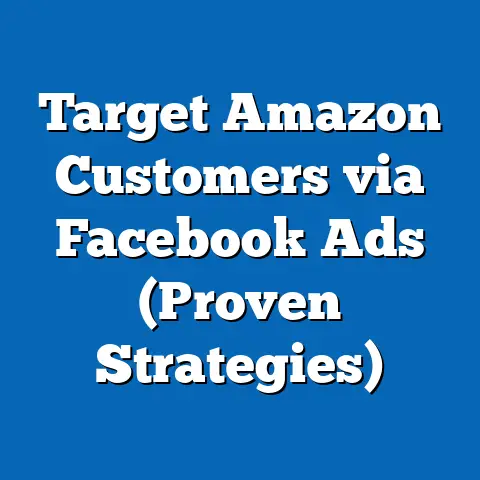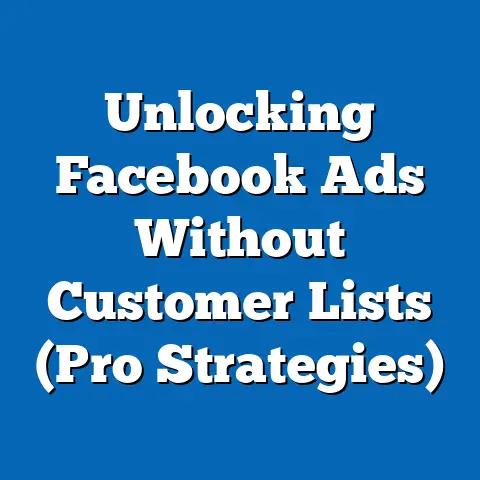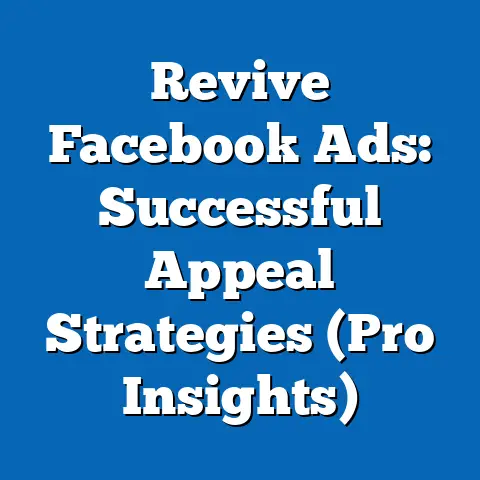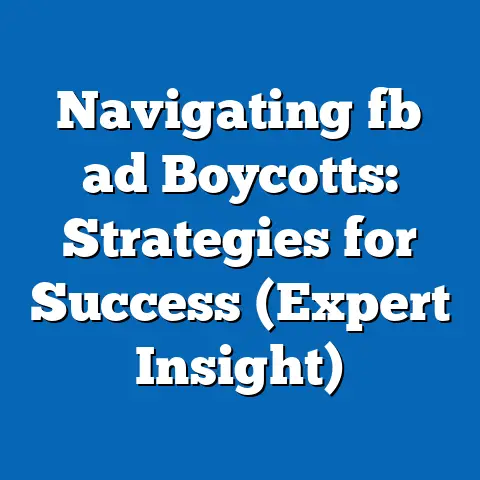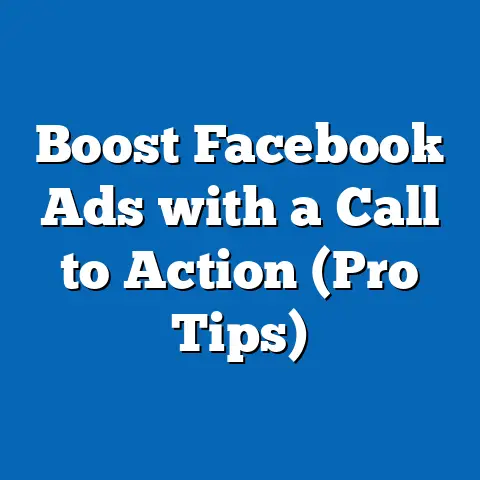Unlock Kajabi Success with Facebook Ads (Expert Strategies)
“Facebook Ads don’t work for online course creators.” This is a myth I’ve heard countless times, and frankly, it’s a statement that couldn’t be further from the truth. I’ve personally seen countless Kajabi users transform their online course businesses with the power of strategic Facebook advertising.
Imagine this: A struggling entrepreneur, let’s call her Sarah, had spent months crafting an incredible online course on digital marketing. She poured her heart and soul into the content, but sales were dismal. She believed the myth, thinking Facebook Ads were a waste of money. Then, she decided to give it one last shot, armed with the right strategies. Within weeks, Sarah saw a dramatic increase in leads, enrollments, and ultimately, revenue. This isn’t just a fairytale; it’s a reality for many who understand how to effectively leverage Facebook Ads for Kajabi.
Understanding Kajabi and Its Audience
Kajabi is an all-in-one platform designed for entrepreneurs to create, market, and sell online courses, membership sites, and digital products. It simplifies the process with tools for course creation, landing pages, email marketing, and sales funnels.
But having a great platform is only half the battle. You also need to reach the right audience. So, who are the typical Kajabi users trying to reach?
Generally, they’re targeting individuals interested in:
- Professional Development: People looking to upskill, learn new software, or advance their careers.
- Personal Growth: Individuals seeking self-improvement courses, mindfulness practices, or hobby-related skills.
- Entrepreneurship: Aspiring business owners who want to learn how to start a business, market their services, or build a brand.
- Specific Niche Expertise: People interested in learning a specific skill, like photography, writing, or coding.
These individuals are often active on Facebook, seeking information, connecting with like-minded people, and discovering new opportunities. This makes Facebook a crucial platform for Kajabi users. It allows you to target specific demographics, interests, and behaviors, ensuring your ads reach the people most likely to be interested in your courses.
Takeaway: Understand your ideal student’s demographics, interests, and pain points. Facebook’s targeting capabilities allow you to connect with them directly.
Setting Up Your Facebook Ads for Kajabi Success
Before diving into ad creation, you need a solid foundation. This involves setting clear goals, defining your target audience, and integrating the Facebook Pixel.
Defining Goals
What do you want to achieve with your Facebook Ads? Are you aiming to:
- Generate Leads: Collect email addresses for future marketing efforts.
- Increase Course Sales: Drive direct sales of your Kajabi courses.
- Boost Brand Awareness: Expand your reach and introduce your brand to a wider audience.
- Drive Traffic to Landing Pages: Increase visibility for specific landing pages within Kajabi.
Why is this important? Setting clear goals helps you measure success and optimize your campaigns. For example, if your goal is lead generation, you’ll focus on metrics like cost-per-lead (CPL) and conversion rates on your lead magnet landing page. If your goal is course sales, you’ll track return on ad spend (ROAS) and average order value.
Example: Let’s say you’re launching a new Kajabi course on “Social Media Marketing for Small Businesses.” Your goal could be to generate 100 leads at a CPL of $5 within the first month. This specific goal allows you to track your progress and adjust your strategy accordingly.
Creating a Target Audience
Facebook’s targeting options are incredibly powerful. You can create custom audiences based on:
- Kajabi User Data: Upload your existing customer list (email addresses) to create a custom audience of your current students.
- Website Visitors: Retarget people who have visited your Kajabi landing pages or website.
- Email Lists: Target subscribers who haven’t yet purchased your courses.
- Demographics: Target specific age groups, genders, locations, education levels, and job titles.
- Interests: Target people interested in topics related to your courses, such as “digital marketing,” “online business,” or “self-improvement.”
- Behaviors: Target people who have shown specific behaviors on Facebook, such as engaging with similar pages or making online purchases.
My Experience: I once worked with a client who was struggling to reach their ideal audience for a course on “Mindful Meditation.” We initially targeted broad interests like “yoga” and “wellness.” While we got some clicks, the conversion rates were low. We then refined our targeting to include interests like “mindfulness-based stress reduction” and “meditation retreats.” This hyper-focused approach resulted in a significant increase in qualified leads and course enrollments.
Utilizing Facebook Pixel
The Facebook Pixel is a small piece of code you install on your Kajabi website. It tracks user actions, such as page views, add-to-carts, and purchases. This data is crucial for:
- Tracking Conversions: See which ads are driving the most sales and leads.
- Optimizing Ads: Facebook uses Pixel data to optimize your ads for conversions, showing them to people most likely to take action.
- Creating Retargeting Audiences: Retarget people who have interacted with your website but haven’t yet converted.
How to Implement: Kajabi makes it easy to integrate the Facebook Pixel. You simply copy the Pixel code from your Facebook Ads Manager and paste it into the designated field in your Kajabi settings.
Takeaway: Setting up your Facebook Ads correctly is crucial for success. Define your goals, create targeted audiences, and install the Facebook Pixel to track conversions and optimize your campaigns.
Crafting Compelling Ad Content
Your ad content is the first thing people see. It needs to be attention-grabbing, relevant, and persuasive.
Ad Copywriting Tips
- Know Your Audience: Write copy that speaks directly to their pain points, desires, and aspirations.
- Highlight Benefits, Not Just Features: Focus on what your course will help them achieve, not just the topics it covers.
- Use Strong Headlines: Grab attention with a compelling headline that promises a solution to their problems.
- Keep it Concise: People scroll quickly on Facebook. Get to the point and use clear, concise language.
- Use Social Proof: Include testimonials, reviews, or statistics to build trust and credibility.
Example: Instead of saying “Learn SEO with our comprehensive course,” try “Dominate Google Search: Learn SEO Secrets That Drive Traffic and Sales.”
Visual Elements
High-quality visuals are essential for capturing attention on Facebook.
- Use Eye-Catching Images: Choose images that are visually appealing, relevant to your course, and consistent with your brand.
- Create Engaging Videos: Video ads are highly effective. Create short, engaging video teasers that showcase your course content and instructor.
- Optimize for Mobile: Most Facebook users browse on mobile devices. Ensure your visuals are optimized for mobile viewing.
- Use Text Overlays Sparingly: Avoid overcrowding your images with text. Keep it clean and easy to read.
My Insight: I’ve found that using authentic, behind-the-scenes footage in video ads can be incredibly effective. Showcasing snippets of your course content, student testimonials, or even just you talking about your passion for the subject can build trust and connection with your audience.
Call-to-Actions (CTAs)
Your CTA is the final nudge that encourages people to take action.
- Use Clear and Action-Oriented Language: Use phrases like “Learn More,” “Sign Up Now,” “Get Started,” or “Download Now.”
- Make it Prominent: Ensure your CTA is visually distinct and easy to click.
- Create a Sense of Urgency: Use phrases like “Limited Time Offer” or “Enroll Today” to encourage immediate action.
- Match the CTA to Your Goal: If your goal is lead generation, use a CTA like “Download Your Free Guide.” If your goal is course sales, use a CTA like “Enroll Now.”
A/B Testing is Key: Experiment with different CTAs to see which ones perform best with your audience.
Takeaway: Craft compelling ad content that resonates with your target audience. Use persuasive copywriting, high-quality visuals, and effective CTAs to drive clicks and conversions.
Ad Formats and Strategies
Facebook offers various ad formats, each with its strengths and weaknesses. Understanding these formats and employing the right strategies can significantly impact your campaign’s success.
Overview of Facebook Ad Formats
- Image Ads: Simple and effective for showcasing your course or brand.
- Video Ads: Highly engaging and ideal for demonstrating your course content.
- Carousel Ads: Allow you to showcase multiple images or videos in a single ad, perfect for highlighting different modules of your course.
- Collection Ads: Designed for mobile users, these ads showcase a collection of products or courses in a visually appealing format.
- Lead Ads: Collect leads directly within Facebook, making it easy for people to sign up for your email list or register for a webinar.
Which Format Works Best for Kajabi Users? I’ve found that video ads and carousel ads tend to perform exceptionally well for promoting Kajabi courses. Video ads allow you to showcase your expertise and provide a taste of your course content, while carousel ads let you highlight different aspects of your course or showcase multiple testimonials.
Retargeting Strategies
Retargeting is the process of showing ads to people who have previously interacted with your website or Facebook page. This is a powerful strategy for Kajabi course creators because it allows you to re-engage potential customers who have already shown interest in your courses.
- Website Retargeting: Show ads to people who have visited your Kajabi landing pages but haven’t yet purchased your courses.
- Facebook Page Retargeting: Target people who have liked or followed your Facebook page.
- Video View Retargeting: Retarget people who have watched a certain percentage of your video ads.
- Lead Ad Retargeting: Show ads to people who have submitted their information through your lead ads but haven’t yet enrolled in your courses.
Example: Someone visits your Kajabi landing page for your “Digital Marketing” course but doesn’t enroll. Retarget them with an ad showcasing a special discount or a limited-time bonus to encourage them to take the plunge.
Lookalike Audiences
Lookalike audiences allow you to expand your reach by finding new potential customers who resemble your existing ones. Facebook analyzes the characteristics of your existing customers (e.g., demographics, interests, behaviors) and identifies other users who share similar traits.
- Source Audiences: You can create lookalike audiences based on your existing customer list, website visitors, or Facebook page fans.
- Percentage Range: You can choose the percentage range for your lookalike audience, with a lower percentage resulting in a more targeted but smaller audience.
My Recommendation: Start with a 1-3% lookalike audience based on your existing customer list. This will give you a highly targeted audience that is likely to be interested in your courses.
Takeaway: Experiment with different ad formats and strategies to find what works best for your audience. Retargeting and lookalike audiences are powerful tools for reaching potential customers who are already interested in your courses.
Optimizing Facebook Ad Campaigns for Kajabi
Creating your ads is just the beginning. Continuous optimization is crucial for maximizing your ROI.
A/B Testing
A/B testing involves testing different versions of your ads to see which ones perform best.
- Test Different Headlines: Experiment with different headlines to see which ones grab the most attention.
- Test Different Visuals: Try different images or videos to see which ones resonate most with your audience.
- Test Different CTAs: See which CTAs drive the most clicks and conversions.
- Test Different Targeting Options: Experiment with different demographics, interests, and behaviors to see which ones yield the best results.
Example: Run two versions of your ad – one with a headline that highlights the benefits of your course and another with a headline that focuses on solving a specific pain point. Track the performance of each ad to see which headline performs better.
Analyzing Ad Performance
Facebook Ads Manager provides a wealth of data to help you analyze the performance of your campaigns.
- Key Metrics to Track:
- Click-Through Rate (CTR): The percentage of people who click on your ad.
- Cost-Per-Click (CPC): The average cost you pay for each click on your ad.
- Conversion Rate: The percentage of people who take the desired action (e.g., sign up for your email list, enroll in your course).
- Cost-Per-Lead (CPL): The average cost you pay for each lead generated.
- Return on Ad Spend (ROAS): The amount of revenue you generate for every dollar you spend on advertising.
- Click-Through Rate (CTR): The percentage of people who click on your ad.
- Cost-Per-Click (CPC): The average cost you pay for each click on your ad.
- Conversion Rate: The percentage of people who take the desired action (e.g., sign up for your email list, enroll in your course).
- Cost-Per-Lead (CPL): The average cost you pay for each lead generated.
- Return on Ad Spend (ROAS): The amount of revenue you generate for every dollar you spend on advertising.
What to Look For: Pay attention to ads with low CTRs or high CPCs. These ads may need to be revised or paused. Focus on ads with high conversion rates and positive ROAS.
Adjusting Strategies Based on Data
The data you collect from Facebook Ads Manager should inform your ad strategies.
- Pause Underperforming Ads: If an ad is not performing well, don’t be afraid to pause it and try something new.
- Increase Budget for High-Performing Ads: Allocate more budget to ads that are generating positive results.
- Refine Your Targeting: Continuously refine your targeting based on the demographics, interests, and behaviors of the people who are converting.
- Adjust Your Bidding Strategy: Experiment with different bidding strategies to see which one yields the best results.
Remember: Facebook Ads is an iterative process. Continuously test, analyze, and adjust your strategies to optimize your campaigns for maximum ROI.
Takeaway: Optimizing your Facebook Ad campaigns is an ongoing process. Use A/B testing, analyze your ad performance, and adjust your strategies based on data to maximize your ROI.
Case Studies and Success Stories
Let’s look at some real-world examples of Kajabi users who have successfully leveraged Facebook Ads:
Case Study 1: The Photography Course
- Challenge: A photographer launched a Kajabi course on “Advanced Portrait Photography” but struggled to reach a wider audience.
- Strategy: They used Facebook Ads to target photography enthusiasts with interests like “portrait photography,” “studio lighting,” and “photoshop.” They created a video ad showcasing stunning portraits and offering a free e-book on “5 Lighting Secrets for Professional Portraits.”
- Results: They generated over 500 leads at a CPL of $3 and saw a 30% increase in course enrollments within the first month.
Case Study 2: The Business Coaching Program
- Challenge: A business coach needed to fill spots in their high-ticket coaching program hosted on Kajabi.
- Strategy: They created a Facebook lead ad offering a free consultation to discuss business challenges and potential solutions. They targeted small business owners and entrepreneurs with interests in “business strategy,” “marketing,” and “leadership.”
- Results: They booked 20 consultations and converted 5 of them into paying clients, resulting in a significant ROI on their ad spend.
What These Success Stories Tell Us:
- Targeted Advertising Works: Focusing on specific interests and demographics is crucial for reaching the right audience.
- Value-Driven Offers Attract Leads: Offering free resources or consultations can be a highly effective way to generate leads.
- Consistent Testing and Optimization are Key: Both of these businesses continuously tested and optimized their ad campaigns to improve performance.
Testimonial Snippet:
“Facebook Ads completely transformed my online course business. I was struggling to reach my target audience, but with the right strategies, I was able to generate a steady stream of leads and enrollments.” – John Smith, Online Course Creator.
Takeaway: Learn from the success stories of other Kajabi users. Targeted advertising, value-driven offers, and continuous optimization are key ingredients for success.
Conclusion
I’ve shown you how Facebook Ads can be a powerful tool for Kajabi users when implemented strategically. Don’t fall for the myth that Facebook Ads don’t work for online course creators. With the right approach, you can reach your ideal audience, generate leads, and drive course sales.
Here are some actionable steps you can take today:
- Define your goals: What do you want to achieve with your Facebook Ads?
- Create a target audience: Who are you trying to reach?
- Install the Facebook Pixel: Start tracking conversions on your Kajabi website.
- Craft compelling ad content: Use persuasive copywriting, high-quality visuals, and effective CTAs.
- Experiment with different ad formats: Find what works best for your audience.
- Continuously test, analyze, and optimize: Maximize your ROI by refining your strategies based on data.
By taking these steps, you can unlock the full potential of Facebook Ads and propel your Kajabi business to new heights. The online course market is booming, and with the right strategies, you can capture your share of the pie. So, go out there, create amazing courses, and let Facebook Ads help you connect with the people who need them most.


